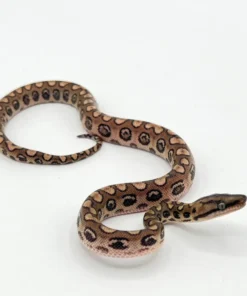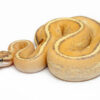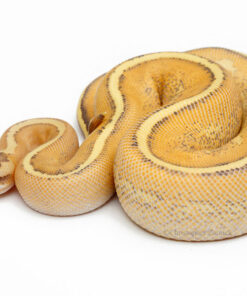Baby Brazilian Rainbow Boa For Sale | Best 1 Snakes shhop
$299.00
Baby Brazilian Rainbow Boa For Sale | Best 1 Snakes shhop | Ball Python for sale | Exotic snakes for sale | Buy Python | Python for sale
Category: EXOTIC SNAKES FOR SALE
Baby Brazilian Rainbow Boa For Sale: A Captivating Choice for Reptile Enthusiasts
The Brazilian rainbow boa (Epicrates cenchria) is a remarkable snake that has captivated the interest of reptile lovers with its striking appearance and relatively manageable size. Known for its beautiful iridescent scales, this species makes a fantastic addition to any collection. In this comprehensive guide, we will delve into everything you need to know about the Brazilian rainbow boa, including where to find one for sale, how to care for a baby Brazilian rainbow boa, and more.
The Allure of the Baby Brazilian Rainbow Boa For Sale
The Brazilian rainbow boa for sale is renowned for its stunning coloration and iridescent sheen. This snake’s scales reflect light in a rainbow spectrum, giving it a unique and captivating appearance. The combination of its beauty and docile nature makes it a popular choice among reptile enthusiasts.
Natural Habitat and Behavior
The Brazilian rainbow boa is indigenous to the tropical rainforests of South America. Its natural range includes Brazil, Guyana, Suriname, French Guiana, and Venezuela. These regions offer the humid, warm environment that this snake thrives in.
In its native habitat, the Brazilian rainbow boa is semi-arboreal, spending time both in trees and on the forest floor. It is primarily nocturnal, hunting small mammals, birds, and reptiles during the night. The snake uses its heat-sensing pits to detect the warmth of its prey, allowing it to hunt effectively in the dark.
Physical Characteristics
Appearance
One of the most striking features of the Brazilian rainbow boa is its iridescence. The scales on this snake have a microscopic structure that diffracts light, creating a beautiful rainbow effect. This iridescence can vary in intensity depending on the angle of the light and the angle of the snake’s scales.
The Brazilian rainbow boa typically grows to a length of 4 to 6 feet, although some individuals can reach up to 8 feet. Its coloration includes reddish-brown and orange hues, with dark bands running along its body. This combination of colors, along with its iridescence, makes the Brazilian rainbow boa a visually stunning reptile.
Size and Growth
Hatchlings of the Brazilian rainbow boa are considerably smaller, measuring around 12 to 18 inches in length. As they grow, they undergo several molts, gradually reaching their full size. Baby Brazilian rainbow boas are especially prized for their vivid colors and striking patterns.
Housing Your Brazilian Rainbow Boa
Providing a suitable habitat for your Brazilian rainbow boa is crucial for its health and well-being. Creating an environment that mimics its natural rainforest habitat will help ensure that your snake remains healthy and comfortable.
Enclosure Size
For an adult Brazilian rainbow boa, a spacious enclosure is necessary. A terrarium measuring 4x2x2 feet or larger is ideal. For baby Brazilian rainbow boas, a smaller enclosure is sufficient, but it should be upgraded as the snake grows.
Temperature and Humidity
Maintaining proper temperature and humidity levels is essential. Brazilian rainbow boas require a temperature range of 78-85°F (25-29°C) during the day, with a slight drop at night. To achieve this, you can use a heat lamp or under-tank heater.
Humidity is another critical factor. Brazilian rainbow boas thrive in high humidity, typically between 60-80%. To maintain this level, use a substrate like coconut fiber or sphagnum moss, which helps retain moisture. Regular misting and a large water dish for soaking will also contribute to the necessary humidity levels.
Hiding Spots and Enrichment
Providing hiding spots and enrichment is important for your snake’s mental and physical health. Offer hides made of various materials, such as wood, rock, or plastic, and place them at both the warm and cool sides of the enclosure. Adding branches or climbing structures will also enrich the snake’s environment, simulating its natural semi-arboreal lifestyle.
Feeding and Diet
In the wild, Brazilian rainbow boas feed on small mammals, birds, and reptiles. In captivity, their diet primarily consists of appropriately sized rodents. Hatchlings and baby Brazilian rainbow boas usually eat pinky mice, while adults can consume larger prey such as mice, rats, or even small rabbits.
Feeding Schedule
Baby Brazilian rainbow boas should be fed every 5-7 days, while adults can be fed every 7-10 days. It’s important to provide prey items that are appropriately sized—roughly the same width as the snake’s body. Overfeeding can lead to obesity and other health issues, so adjust the feeding schedule based on the snake’s weight and overall health.
Water
Always ensure that a clean, fresh water source is available. Brazilian rainbow boas will drink regularly and may also use the water dish to soak. Regularly clean and refill the water dish to prevent bacterial growth and ensure your snake remains hydrated.
Health and Care
Common Health Issues
Brazilian rainbow boas are generally healthy and hardy snakes, but they can be susceptible to certain health issues. Some common problems include respiratory infections, mites, and skin issues. Regular health checks and maintaining proper enclosure conditions can help prevent these issues.
Handling and Socialization
Brazilian rainbow boas are known for their relatively calm and gentle temperament. They can be handled regularly, but it’s important to do so with care. Always support the snake’s body and avoid sudden movements to reduce stress. Regular handling will help your boa become accustomed to human interaction and can make future handling sessions more enjoyable.
Breeding and Reproduction
If you’re interested in breeding Brazilian rainbow boas, understanding their reproductive cycle is essential. Breeding typically occurs during the cooler months of the year. Female boas require a period of cooling to stimulate breeding, followed by a warming period to encourage successful reproduction.
Baby Brazilian Rainbow Boas
After successful mating, the female will lay a clutch of eggs, which she will incubate until they hatch. Baby Brazilian rainbow boas emerge fully formed and ready to start their new lives. They will need appropriate care, including a suitable enclosure, proper temperature, and humidity levels, as well as a diet of small prey.
Where to Find a Brazilian Rainbow Boa for Sale
If you’re looking to add a Brazilian rainbow boa to your collection, there are several places where you can find one for sale. Many reputable breeders and pet stores offer Brazilian rainbow boas for sale, including hatchlings and adults. It’s important to choose a reliable source that provides healthy and well-cared-for snakes.
Finding a Reputable Breeder
When searching for a Brazilian rainbow boa for sale, consider contacting reputable breeders who specialize in this species. Look for breeders with positive reviews and a track record of ethical practices. A good breeder will provide information about the snake’s lineage, health, and care requirements.
Online and Local Sources
In addition to breeders, you can find Brazilian rainbow boas for sale through online reptile forums, social media groups, and local reptile expos. Always verify the credibility of the seller and ensure that the snake has been properly cared for before making a purchase.
Conclusion
The Brazilian rainbow boa is a stunning and captivating snake that makes an excellent choice for reptile enthusiasts. With its iridescent scales, manageable size, and relatively calm demeanor, it offers both beauty and ease of care. Whether you’re searching for a baby Brazilian rainbow boa or a more mature snake, it’s important to choose a reputable source and provide the best possible care.
By creating an environment that mimics its natural habitat, maintaining proper temperature and humidity levels, and offering a balanced diet, you can ensure that your Brazilian rainbow boa remains healthy and thriving. Whether you’re a first-time keeper or a seasoned collector, the Brazilian rainbow boa is sure to be a cherished addition to your reptile collection.
Be the first to review “Baby Brazilian Rainbow Boa For Sale | Best 1 Snakes shhop” Cancel reply
Related products
EXOTIC SNAKES FOR SALE
Baby Albino Ball Python For Sale | Best 1 Exotic Snakes for sale
Rated 4.50 out of 5
$299.00
EXOTIC SNAKES FOR SALE
$499.00
EXOTIC SNAKES FOR SALE
$350.00
EXOTIC SNAKES FOR SALE
Baby Puma Ball Python For Sale | Best 1 Exotic snakes for sale
$299.00
















Reviews
There are no reviews yet.